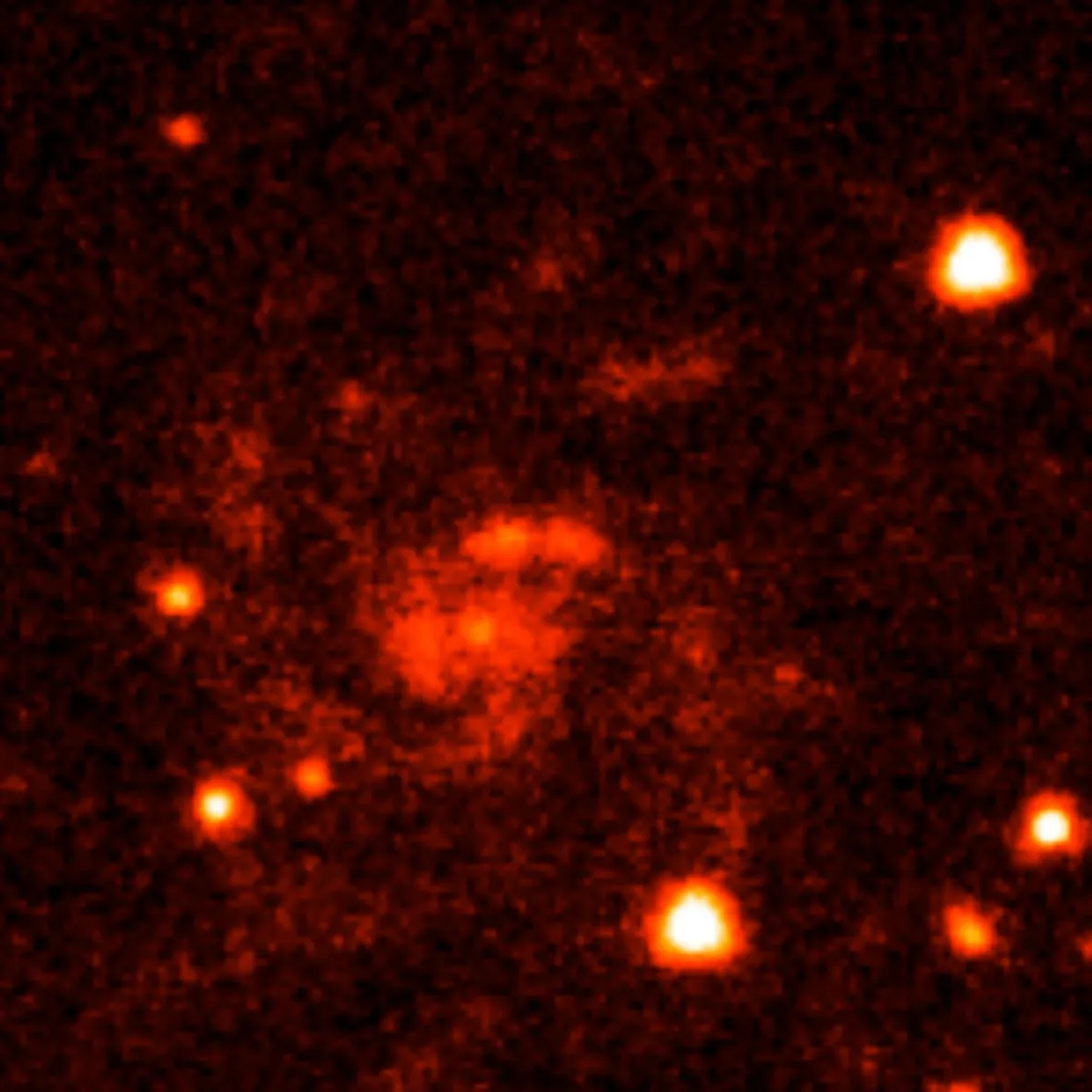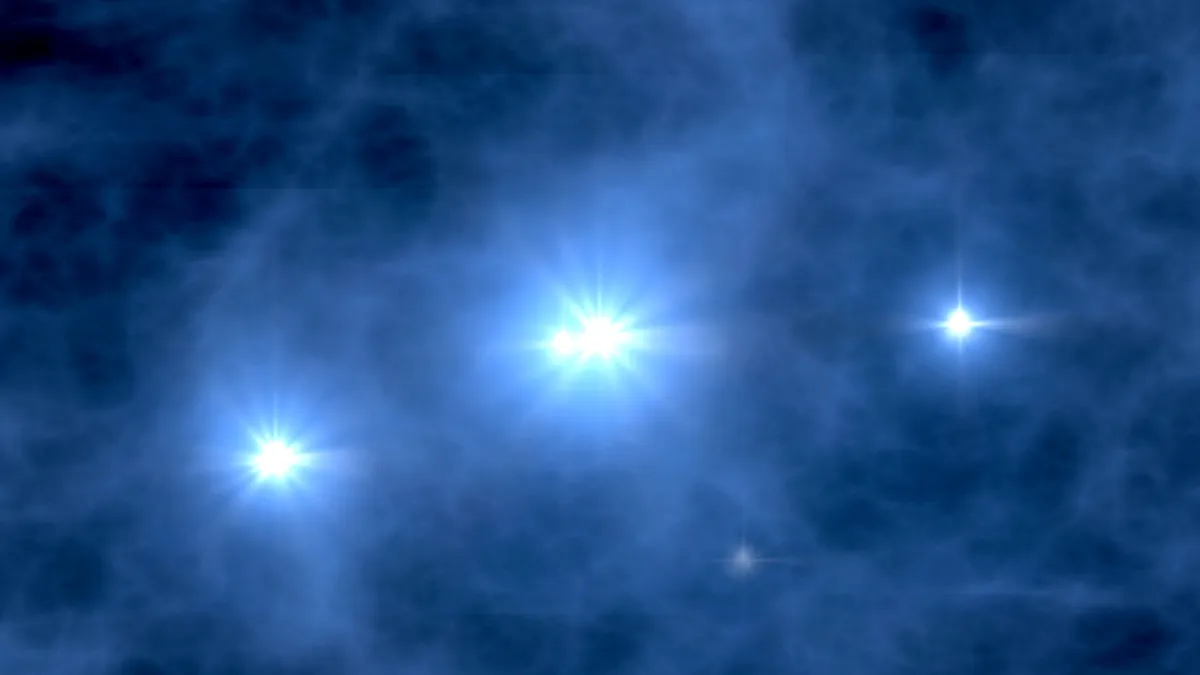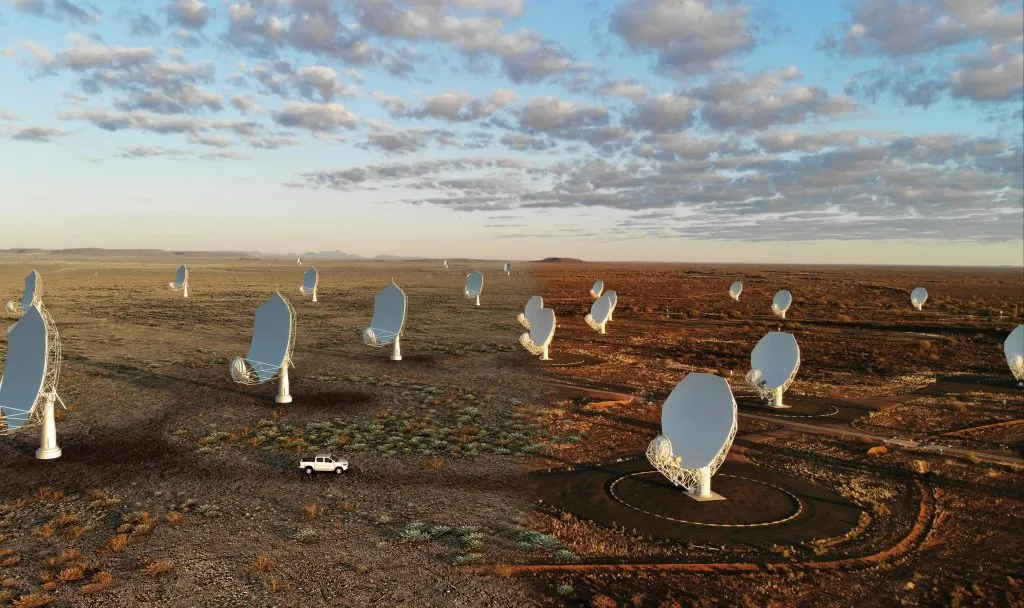When we look at very distant objects, we look far back in time so, theoretically, if we look far enough into the Universe, we should be able to see the very first stars.
Large telescopes with modern detectors allow astronomers to see almost all the way back to the Big Bang, 13.8 billion years ago.
The most distant galaxies and quasars discovered are around 13 billion years old.
What we observe then is a Universe with more or less the same character as today. We see stars exploding as supernovae and gamma-ray bursts.

We can't know whether there was a Universe before the Big Bang, but we can look back to about 300,000 years after the Big Bang, when a sky glow called the Cosmic Microwave Background (CMB) was emitted.
We don’t see galaxies, just a blanket of radiation all over the sky.
It’s a signal from the first time protons and electrons combined to form hydrogen atoms.
I want to know what the Universe was like in the intervening period before the first stars formed. So far our only clue has been what we see in the CMB.
A smooth, dark Universe

The CMB gives us a very different picture to the one 700 million years later. The Universe was extremely smooth at that point, made up only of hydrogen and helium with only a few tiny irregularities.
The gap in time between when the CMB was emitted and the first galaxies is known as the Cosmic Dark Ages; ‘Dark’ because there were presumably no stars.
It was a very bland and uneventful period. But if there were no stars and galaxies to shine, what do you look for?
There must have been a time when the Universe changed from being smooth and uniform and formed tiny lumps.
Gravity acted upon denser regions of gas, and when they became dense enough, the first stars were born.

These first stars had a crucial role in the evolution of our Universe.
They were made of just hydrogen and helium – and no one has ever seen one.
This is probably because they were very massive stars, and massive stars don’t last very long.
If they exploded within a few million years, they would have spread out all the elements they made in their interiors, such as carbon, nitrogen, oxygen and iron, thus starting the cycle of cosmic evolution.
Astronomers would love to see one of these early supernova explosions directly. It is the holy grail for astronomers – the last observational frontier.
There are plans in place to peer into the Cosmic Dark Ages with powerful new radio telescopes such as the proposed Square Kilometre Array, which will study a specific wavelength of radiation from neutral hydrogen known as the ‘21cm line’, to map the earliest structure in the Universe.

I have tried to use a different method by looking for little pockets of gas that may have been left undisturbed from that time.
I do this by examining light emitted by the bright cores of distant galaxies, called quasars.
As light from the quasar travels towards us, it intercepts pockets of gas, which leave their imprint on the quasar’s spectrum.
We’ve learned to recognise which gas has remained almost undisturbed since the first stars.
Its chemical composition can give a clue as to what was produced when the very first stars exploded.
In the Sun you find a certain proportion of iron to hydrogen. In these distant pockets of gas we see only a thousandth as much, because they have been enriched by only a few stars rather than by many thousands.
Predictions also suggest that the very first massive stars would have produced very much less iron and much more carbon and oxygen.
We’ve found the first example of one of these pockets of gas where the ratio of iron to carbon is 35 times less than in the Sun.
This is in agreement with expectations for what might be produced in the first ever stellar explosions. It’s a small but significant step in our understanding of the Cosmic Dark Ages.
This article originally appeared in the April 2011 issue of BBC Sky at Night Magazine.
